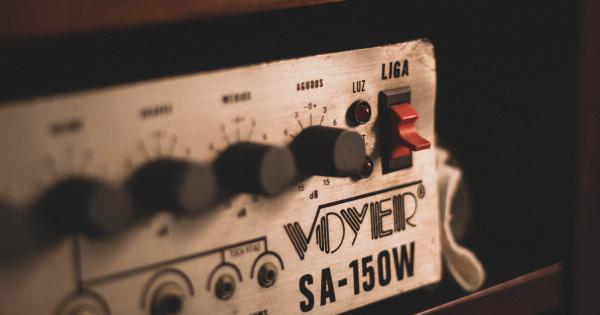Depression is a common mental health disorder that affects millions of people worldwide, including adolescents.
While traditional treatments such as therapy and medication are effective for many, some individuals may seek alternative approaches to alleviate their symptoms. This article explores various alternative methods to combat depression in adolescents, focusing on promoting calmness and inner peace.
The Importance of Addressing Adolescent Depression
Adolescence is a critical period of development characterized by numerous physical, emotional, and social changes. It is also a time when mental health concerns, such as depression, often emerge.
Depression in adolescents can have severe consequences, including impaired academic performance, strained relationships, and an increased risk of substance abuse or self-harm. Therefore, it is vital to address this issue promptly and effectively.
Mindfulness Meditation: Cultivating Present-Moment Awareness
Mindfulness meditation is a practice that involves staying fully present and aware in the current moment, without judgment. It has gained popularity as an alternative approach to managing depression and anxiety.
Adolescents can benefit from mindfulness meditation by learning to observe their thoughts and feelings without getting overwhelmed by them. Studies have shown that regular mindfulness practice can reduce depressive symptoms, enhance emotional regulation, and increase overall well-being.
Yoga and Relaxation Techniques: Balancing the Mind and Body
Yoga combines physical postures, breathing exercises, and meditation to promote relaxation and improve mental health. Through various poses and movements, adolescents can release tension, reduce stress, and improve their body awareness.
Yoga also offers a non-judgmental space for self-expression and self-discovery, facilitating emotional healing and resilience. Additionally, incorporating relaxation techniques such as deep breathing exercises and progressive muscle relaxation can further enhance the calming effects of yoga.
Art Therapy: Self-Expression and Emotional Healing
Art therapy provides an avenue for adolescents to express their emotions and thoughts visually. Engaging in creative activities such as painting, drawing, or sculpture can foster self-awareness, decrease anxiety, and serve as a means of catharsis.
Art therapy allows individuals to explore their feelings in a safe and supportive environment, making it especially beneficial for adolescents who may struggle with verbalizing their emotions. Creating art can also instill a sense of accomplishment and boost self-esteem.
Nature Therapy: Connecting with the Outdoors
Spending time in nature has been shown to have numerous mental health benefits, including a reduction in depressive symptoms. Nature therapy, also known as ecotherapy or green therapy, involves engaging with natural environments to enhance well-being.
Adolescents can connect with nature by taking walks in parks, gardening, or participating in outdoor activities. Being in natural settings can promote relaxation, boost mood, and provide a sense of tranquility. This alternative approach to depression offers a refreshing change of scenery from the pressures of everyday life.
Animal-Assisted Therapy: The Healing Power of Animals
Animal-assisted therapy involves interactions between individuals and trained animals to promote emotional and physical healing. The presence of animals has been found to reduce stress, increase serotonin levels, and enhance social connections.
Adolescents struggling with depression can benefit from bonding with therapy animals, such as dogs or horses, as the connection can provide comfort, companionship, and a sense of unconditional love. Animal-assisted therapy also encourages responsibility and empathy, which can aid in the overall well-being of adolescents.
Aromatherapy: Soothing Scents for the Mind
Aromatherapy involves the use of essential oils to promote relaxation, reduce anxiety, and improve mood. Certain scents, such as lavender, chamomile, or bergamot, have been shown to have calming effects on the mind and body.
Adolescents can incorporate aromatherapy into their daily routine by using essential oil diffusers, taking relaxing baths with scented oils, or using roll-on blends. However, it is essential to note that some individuals may have sensitivities or allergies to certain scents, so caution should be exercised when using aromatherapy.
Music Therapy: Healing through Harmony
Music therapy involves using music to address emotional, cognitive, and social needs. Adolescents with depression can find solace in listening to music or engaging in musical activities such as playing an instrument or singing.
Music has the power to elicit emotions, evoke memories, and provide an outlet for self-expression. Creating playlists with uplifting or calming melodies can help regulate mood and alleviate depressive symptoms. Music therapy can be particularly beneficial when combined with traditional therapy approaches.
Herbal Remedies: Exploring Natural Supplements
In recent years, herbal remedies have gained attention as potential alternatives to traditional medication for treating depression. St.
John’s Wort, for example, is a plant-based supplement that has been investigated for its antidepressant properties. However, it is crucial to consult with a healthcare professional before incorporating any herbal remedies into an adolescent’s treatment plan.
Herbal supplements may have interactions with other medications or existing medical conditions, emphasizing the importance of expert guidance in their use.
Acupuncture: Restoring the Flow of Energy
Originating from Traditional Chinese Medicine (TCM), acupuncture involves the insertion of thin needles into specific points in the body to restore the flow of energy, known as Qi.
Some studies suggest that acupuncture may be beneficial in reducing depressive symptoms and improving overall well-being. However, more research is needed to determine its efficacy specifically for adolescent depression. Acupuncture should be performed by a licensed and experienced practitioner to ensure safety and effectiveness.
The Power of Alternative Approaches
Alternative approaches to treating depression in adolescents offer a therapeutic and holistic perspective that goes beyond traditional methods.
By focusing on creating calmness and inner peace, these alternative methods can complement existing treatments and empower adolescents to take an active role in their mental health. Individuals should remember that what works for one person may not work for another, and it is crucial to find an approach that resonates with the individual’s unique needs and preferences.





























